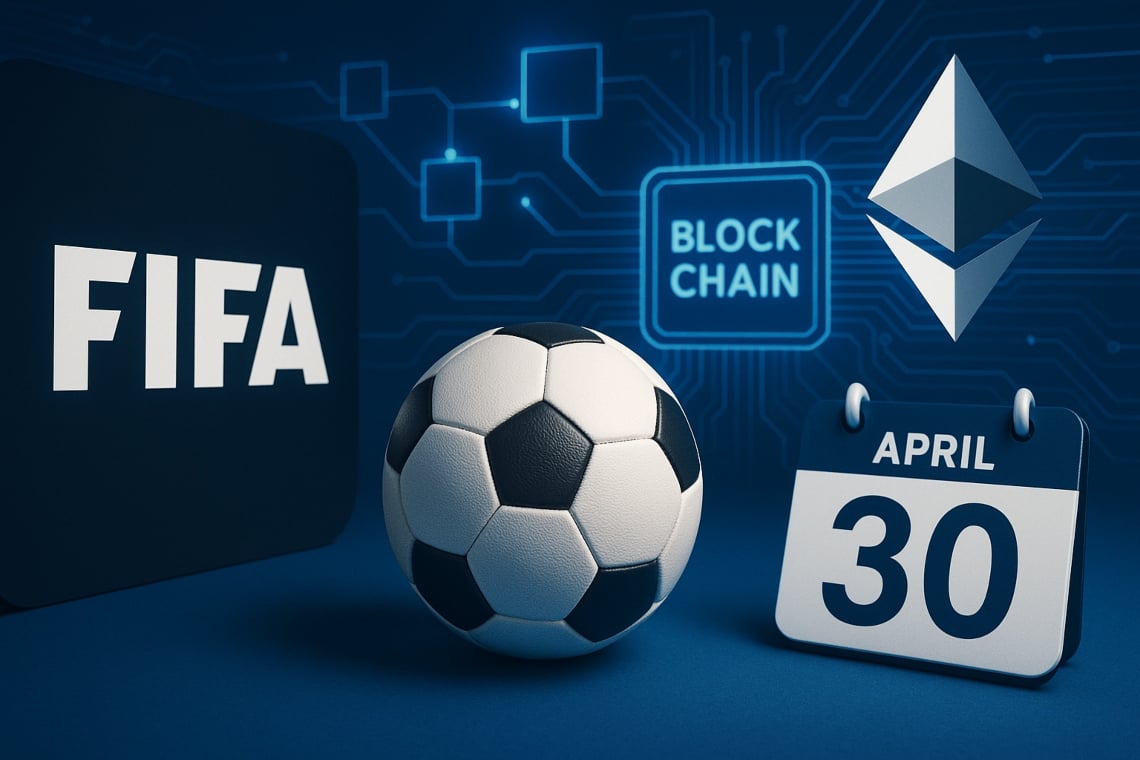FIFA Enters Web3 with Custom EVM-Compatible Blockchain
The Fédération Internationale de Football Association (FIFA) has officially launched a new Ethereum Virtual Machine (EVM)-compatible blockchain , named FIFA Blockchain . This platform will host all of FIFA’s official NFT collections and digital fan experiences.
As part of this transition, FIFA announced that its flagship NFT collection, FIFA Collect , will migrate from the Algorand blockchain to FIFA Blockchain , starting no earlier than May 20, 2025 .
This move represents a major step forward in FIFA’s strategy to enhance digital engagement with fans using blockchain technology.
What Is FIFA Blockchain?
FIFA Blockchain is a newly developed network specifically designed to support:
- Official NFT collectibles
- Digital rewards and incentives
- Fan-driven experiences
- Integration with future Web3 features
By choosing an EVM-compatible architecture , FIFA ensures compatibility with a wide range of tools, wallets, and decentralized applications (dApps). This makes it easier for developers and users to interact with the ecosystem while maintaining flexibility for future upgrades.

Migration Plan: Moving FIFA Collect from Algorand to FIFA Blockchain
FIFA Collect, which was originally launched on Algorand in 2022, will be migrated to the new blockchain as follows:
- Start Date : Migration begins no earlier than May 20, 2025
- Automatic Transfer : Listed NFTs will be moved automatically unless delisted before the deadline
- No Immediate Action Required : Users will receive clear instructions once the process starts
- Free Migration : There are no fees associated with moving NFTs
After the migration:
- Pera Wallet , Defly , and other Algorand-based wallets will no longer be supported
- Users can connect via MetaMask or any wallet supporting WalletConnect
For those who export their NFTs, they must re-import them before May 20 to ensure a seamless transfer. Otherwise, they may need to go through manual verification with customer support.
Why Did FIFA Decide to Change Blockchains?
FIFA described the switch as part of a broader effort to build a more robust foundation for long-term growth in the Web3 space.
Key reasons for adopting an EVM-compatible chain include:
- Improved performance and scalability
- Greater interoperability with existing platforms and services
- Attracting more developers and partners
- Future-ready infrastructure to support upcoming features such as token-gated events and digital ticketing
This decision aligns with industry trends, where many projects — including Injective and Polygon — have also adopted EVM compatibility to improve functionality and enable deeper DeFi integration.

FIFA’s Journey into Web3 and NFTs
FIFA first entered the NFT space in 2022 , launching FIFA Collect on the Algorand blockchain ahead of the World Cup in Qatar.
In 2023 , FIFA expanded to Polygon in collaboration with Modex , releasing exclusive NFTs during the Club World Cup in Saudi Arabia. These NFTs offered benefits such as early access to tickets for future tournaments.
Then, in November 2024 , FIFA partnered with Mythical Games to develop FIFA Rivals , a free-to-play mobile soccer game set to launch in summer 2025 . Built on the Polkadot blockchain, the game will allow players to earn and trade in-game assets.
John Linden, CEO of Mythical Games, expressed optimism about the project’s potential, predicting that FIFA Rivals could attract over 100 million players , based on the success of its NFL-themed version, NFL Rivals , which already has 6 million registered users .
Impact on the Blockchain Ecosystem
FIFA’s adoption of an EVM-compatible blockchain strengthens the Ethereum ecosystem by bringing one of the world’s largest sports organizations into the fold.
However, this shift may negatively impact Algorand , which loses a high-profile partner. Some community members praised the move as a strategic upgrade, while others raised concerns about gas fees and user experience on EVM chains.
Despite these concerns, FIFA’s global influence positions this initiative to drive mainstream adoption of blockchain in sports and entertainment.
What’s Next for FIFA Blockchain?
FIFA plans to introduce several new features in the coming months, including:
- Digital ticketing systems stored on-chain
- Token-gated rewards for loyal fans
- Partnerships with game studios and DAOs
- Integration with DeFi protocols and fan tokens
These updates aim to not only digitize football memorabilia but also transform how fans engage with the sport globally.

Conclusion: A New Chapter for Sports and Web3
With the launch of FIFA Blockchain , FIFA shows how traditional industries are embracing blockchain to innovate and connect with audiences in meaningful ways.
By shifting to an EVM-compatible chain , FIFA is building a scalable, flexible platform for future fan experiences and digital collectibles.
As blockchain continues to reshape sports, entertainment, and finance, FIFA’s latest move proves one thing clearly: Web3 is becoming a core part of the digital future.




